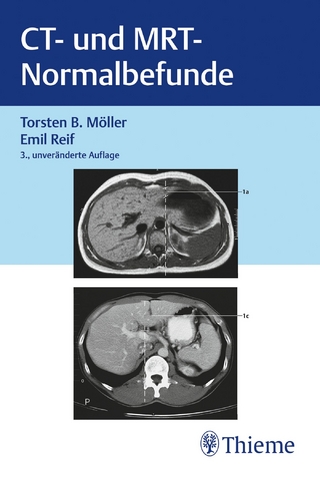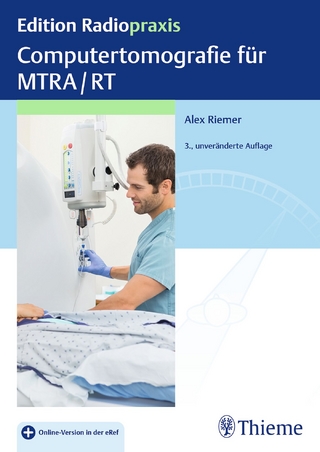
Optical Coherence Tomography in Neurologic Diseases
Cambridge University Press (Verlag)
978-1-107-04130-1 (ISBN)
- The first comprehensive review of the clinical use of OCT in a wide range of neurological diseases
- Practical, reflecting the rapid move of OCT into routine office practice
- Extensively illustrated in color, with sample case-histories and the expertise of leading physicians
The first comprehensive review of the use of optical coherence tomography in neurological diseases for neurologists, neuro-ophthalmologists, and neuroradiologists.
Optical coherence tomography (OCT) provides tissue morphology imagery at much higher resolution than other imaging modalities such as MRI or ultrasound, and the machines are comparatively cheaper. It is an easy technique to perform; is non-ionizing, and therefore safe.
These benefits are driving a rapid transformation of OCT, from its principal application as a research tool, into an extension of the 'neurological examination' in routine office practice.
Originally used in assessing the severity of tissue damage and prognosis of multiple sclerosis and various neuro-ophthalmic conditions, OCT is increasingly used in other neurological disorders such as Parkinson's disease, ALS, and Alzheimer's disease. This book is the first comprehensive review of the use of OCT in neurological diseases.
The coverage includes a description of the technique and its utilization in a variety of neurologic conditions. Essential reading for neurologists, neuro-ophthalmologists, and neuroradiologists wanting an introductory account of the clinical applications of OCT.
Peter A. Calabresi is Professor of Neurology, Director of the Richard T. Johnson Division of Neuroimmunology and Neuroinfectious Diseases, and Director of the Johns Hopkins Multiple Sclerosis Center, Johns Hopkins University School of Medicine, Baltimore, Maryland, USA.
Laura J. Balcer is Professor and Vice Chair, Department of Neurology, New York University Langone Medical Center, New York, USA.
Elliot M. Frohman is a Professor of Neurology, Department of Neurology, University of Texas Southwestern Medical Center, Dallas, Texas, USA.
Preface
1. Introduction to optical coherence tomography in neurological diseases Peter A. Calabresi, Laura J. Balcer and Elliot M. Frohman
2. Basic principles of optical coherence tomography Sven Schippling
3. Anatomy of the anterior visual pathway Devin D. Mackay, Stephen L. Galetta and Sashank Prasad
4. Optical coherence tomography in acute optic neuritis Andrew P. D. Henderson, S. Anand Trip and David H. Miller
5. Optical coherence tomography and visual outcomes in acute optic neuritis Fiona Costello
6. Optical coherence tomography and low contrast acuity Shin C. Beh and Laura J. Balcer
7. Optical coherence tomography and electrophysiology of the visual pathway A. Klistorner, C. L. Fraser, C. Yiannikas and S. L. Graham
8. Optical coherence tomography and electrophysiology of the optic nerve head Shin C. Beh, Zane Schnurman, Darrel Conger, Amy Conger, Benjamin M. Greenberg, Elliot M. Frohman and Teresa C. Frohman
9. Meta-analysis of optical coherence tomography in multiple sclerosis Axel Petzold
10. Optical coherence tomography and brain MRI in multiple sclerosis Shiv Saidha and Peter A. Calabresi
11. Optical coherence tomography in neurodegenerative diseases Friedemann Paul and Alexander Ulrich Brandt
12. Optical coherence tomography pathologies to know about in clinical practice Scott Newsome and John N. Ratchford
13. Optical coherence tomography and retinal segmentation in neurological diseases Elias S. Sotirchos and Shiv Saidha
14. Optical coherence tomography and retinal pathology in neurologic diseases Ari J. Green
15. Retinal inflammation in MS revealed by optical coherence tomography and ophthalmoscopy Elena H. Martinez-Lapiscina, Bernardo Sanchez-Dalmau and Pablo Villoslada
16. Optical coherence tomography and optic nerve MRI in demyelinating diseases Robert T. Naismith
17. Optical coherence tomography in neurologic clinical trials Robert A. Bermel and Peter K. Kaiser
18. Optical coherence tomography in multi-center setting: quality control issues Axel Petzold, Laura J. Balcer, Peter A. Calabresi, Fiona Costello, Elliot M. Frohman, Ari J. Green, Sasha Klistorner, Friedemann Paul, Sven Schippling and Pablo Villoslada
19. Future technological advances in optical coherence tomography Hiroshi Ishikawa and Joel Schuman
Index.
| Erscheint lt. Verlag | 14.5.2015 |
|---|---|
| Zusatzinfo | 40 b/w illus. 88 colour illus. 15 tables |
| Verlagsort | Cambridge |
| Sprache | englisch |
| Maße | 189 x 246 mm |
| Gewicht | 700 g |
| Einbandart | gebunden |
| Themenwelt | Medizin / Pharmazie ► Medizinische Fachgebiete ► Neurologie |
| Medizinische Fachgebiete ► Radiologie / Bildgebende Verfahren ► Computertomographie | |
| Medizinische Fachgebiete ► Radiologie / Bildgebende Verfahren ► Radiologie | |
| Schlagworte | Alzheimer • Neurologie • neurologische Diagnostik • Neurologische Erkrankungen • Neuroradiologie • OCT • Optical Coherence Tomography (OCT) • Optische Kohärenztomografie • Optische Kohärenztomographie |
| ISBN-10 | 1-107-04130-9 / 1107041309 |
| ISBN-13 | 978-1-107-04130-1 / 9781107041301 |
| Zustand | Neuware |
| Haben Sie eine Frage zum Produkt? |
aus dem Bereich


